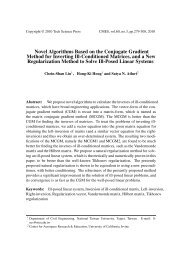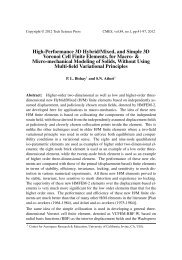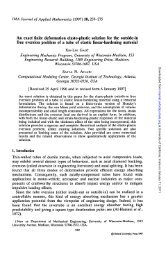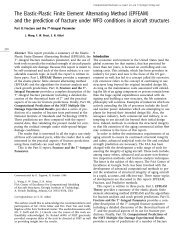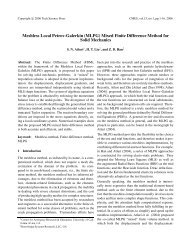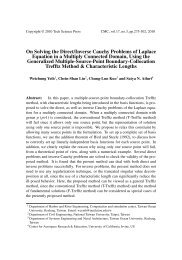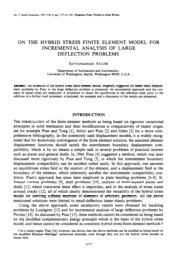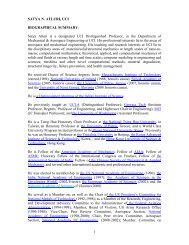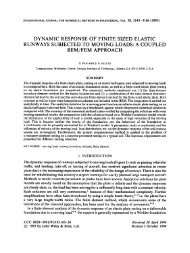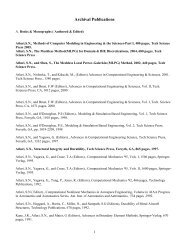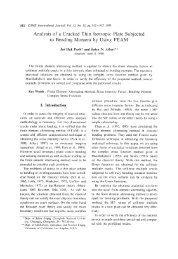A Scalar Homotopy Method for Solving an Over ... - TechScience
A Scalar Homotopy Method for Solving an Over ... - TechScience
A Scalar Homotopy Method for Solving an Over ... - TechScience
Create successful ePaper yourself
Turn your PDF publications into a flip-book with our unique Google optimized e-Paper software.
A <strong>Scalar</strong> <strong>Homotopy</strong> <strong>Method</strong> <strong>for</strong> <strong>Solving</strong> <strong>an</strong> <strong>Over</strong>/Under-Determined System 49of these defects of the Newton method; see the discussions by Broyden (1965),Dennis (1971), Dennis <strong>an</strong>d More (1974, 1977), <strong>an</strong>d Spedicato <strong>an</strong>d Hu<strong>an</strong>g (1997).Davidenko (1953) was the first who developed a new idea of homotopy method tosolve Eq. (1) by numerically integratingẋ(t) = −H −1x H t (x,t), (3)x(0) = a, (4)where H is a homotopic vector function, <strong>for</strong> example, H = (1 −t)(x − a) +tF(x),<strong>an</strong>d H x <strong>an</strong>d H t are, respectively, the partial derivatives of H with respect to x <strong>an</strong>d t.This theory was later refined by Kellogg, Li <strong>an</strong>d Yorke (1976), Chow, Mallet-Paret<strong>an</strong>d Yorke (1978), Li <strong>an</strong>d Yorke (1980), <strong>an</strong>d Li (1997). The homotopy method hasm<strong>an</strong>y merits, such as its global convergence (i.e., one c<strong>an</strong> obtain the solution <strong>for</strong>arbitrary initial guess), multiple roots searching (due to the fact that one homotopypath c<strong>an</strong>not intersect with <strong>an</strong>other homotopy path); but it also suffers from its veryslow convergence speed in comparison with other iteration methods.Hirsch <strong>an</strong>d Smale (1979) also derived a “continuous Newton method” governed bythe following differential equation:ẋ(t) = −B −1 (x)F(x), (5)x(0) = a, (6)where a ∈ R n . It c<strong>an</strong> be seen that the ODEs in Eqs. (3) <strong>an</strong>d (5) are difficult to solve,because they all involve inverting a matrix. Atluri, Liu <strong>an</strong>d Kuo (2009) proposeda modified Newton method <strong>for</strong> solving nonlinear algebraic equations avoiding theinverse of the Jacobin matrix. In addition, the number of equations <strong>an</strong>d the numberof unknowns should be equal. Numerically speaking, such a constraint makes theinverse of a matrix possible. However, it is not a necessary condition <strong>for</strong> the existenceof solutions <strong>for</strong> a system of underdetermined or overdetermined system ofequations.To eliminate the need <strong>for</strong> inverting a matrix in the iteration procedure, the first-orderODE system such asẋ = −F(x), (7)x(0) = a (8)has been used [Ramm (2007)]. However, iteration procedure in Eq. (7) is verysensitive to the initial guess <strong>an</strong>d may have a very low convergence speed. Liu <strong>an</strong>dAtluri (2008) have proposed <strong>an</strong>other first-order nonlinear ODE system, as:ẋ = − ν F(x), (9)1 +t



